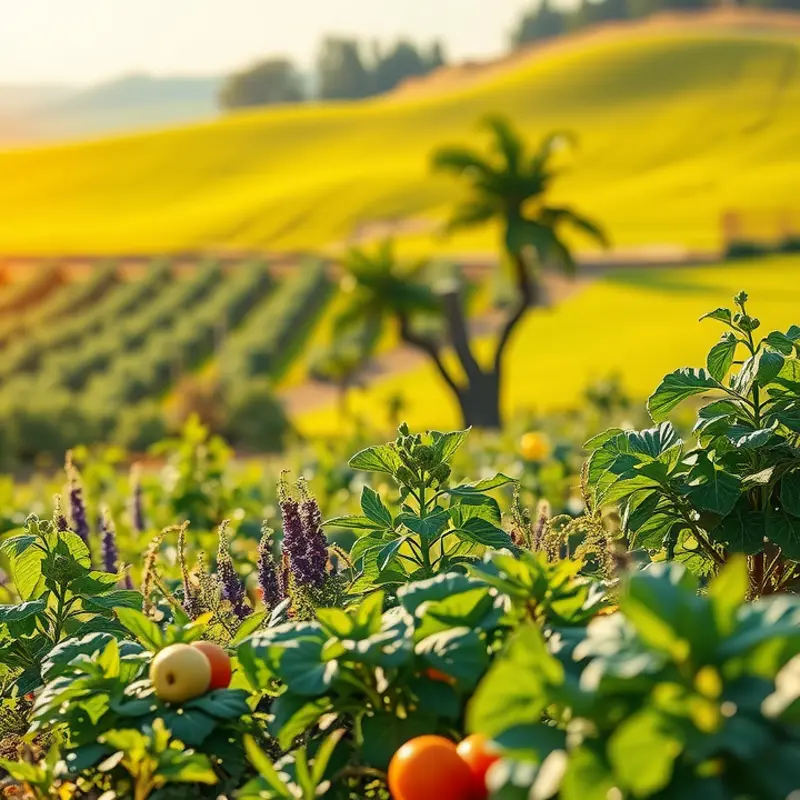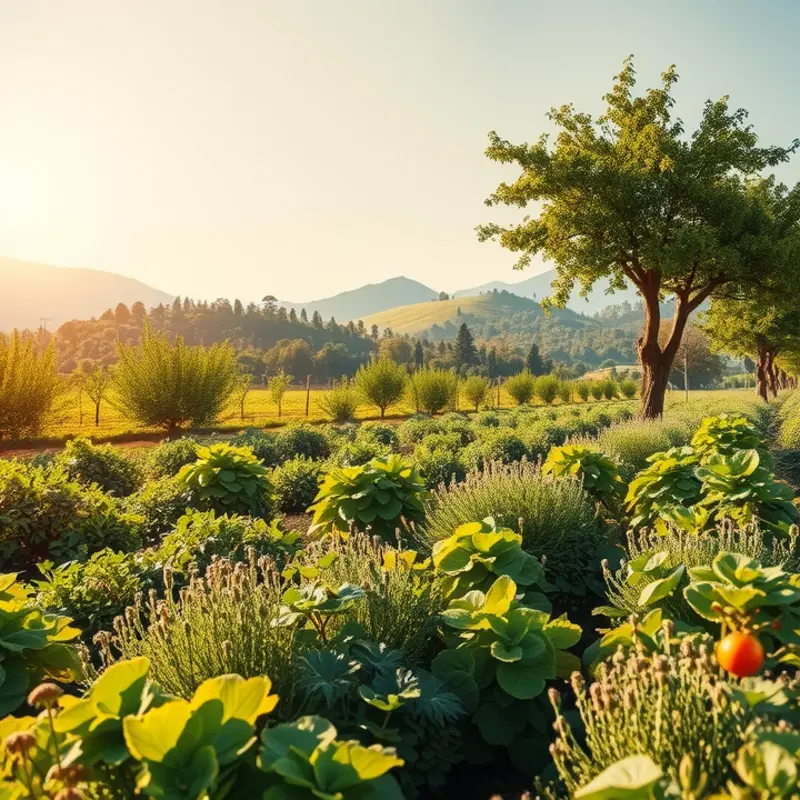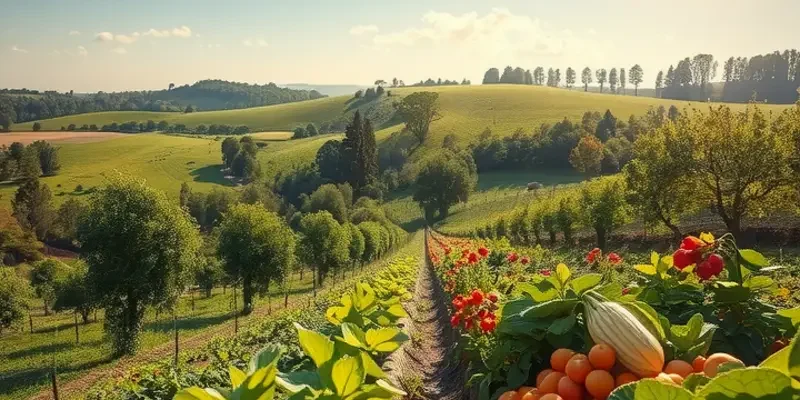Desert cuisine encapsulates the unique flavors and sustainable practices developed by cultures thriving in extreme environments. From the arid Sahara to the Middle Eastern deserts, culinary traditions are deeply influenced by geography, climate, and cultural interactions. Join us as we explore the diverse ingredients, cooking techniques, and the stories that accompany the food of these sun-scorched regions. Engage your taste buds and curiosity as we venture into the vibrant world of desert cuisine.
Flavor Profiles of Arid Regions

In the world’s deserts, culinary traditions are a testament to human ingenuity. The arid landscapes demand a resourceful approach, using limited ingredients in creative ways. Key staples like grains, legumes, and nuts, often ground into flour, serve as the backbone of many dishes. These ingredients are immensely versatile, providing sustenance and an essential canvas for a variety of spices and techniques.
Spices take center stage in desert cuisine, with bold flavors standing out against the backdrop of simple base ingredients. Cumin, coriander, and turmeric are frequently featured, alongside native herbs like za’atar. Such spices are not merely for flavor; they symbolize centuries of trade and cultural exchange. Aromatic blends enhance the earthy tones of grains, creating complex layers in each dish.
Sustainability and resource use are vital in these regions. The scarcity of water influences every culinary choice. Techniques like dry roasting and grilling are common, allowing ingredients to impart smoky notes without water. Preserving food through methods like drying and pickling is crucial, ensuring ingredients last through periods of scarcity. The sun’s intense heat is harnessed to dry fruits and meats, a natural preservation method that locks in flavors.
Preservation methods are especially significant, as fresh produce is often a luxury. Vegetables like eggplants and peppers are frequently pickled or made into preserves that can be used long after their harvest. Such methods exemplify the smart, waste-reducing techniques vital in harsh climates.
In terms of traditional dishes, one might encounter a savory stew simmered with lentils and spiced meat, reflecting a harmony of texture and flavor. The use of tahini and yogurt adds a creamy contrast, offering cooling relief in the heat. Breads, often flat and unleavened, are baked quickly over open flames or hot stones, their crisp texture ideal for scooping up rich stews and sauces.
Local resources shape these dishes. In North Africa, argan oil—a precious product extracted by hand—is drizzled over dishes, adding nutty richness. Dates, a staple in Middle Eastern deserts, offer natural sweetness and energy, balancing savory elements in various recipes.
Embracing these culinary traditions offers invaluable insights into sustainable eating practices where nothing is wasted. For a deeper understanding of how storage practices can minimize waste, refer to eco-smart kitchen storage.
Across the deserts of the world, every dish tells a story of resilience and adaptation, turning what is found locally into a feast of flavors. These culinary practices reflect the wisdom and traditions that have been honed over generations, ensuring that even in the most unforgiving landscapes, life thrives with savory creativity.
Culinary Traditions: Recipes and Techniques

The sun-baked expanse of the desert might seem inhospitable, yet it is home to culinary traditions that are as rich as the sands themselves. In these vast, arid regions, cuisine is crafted not only from necessity but as an art form deeply embedded in cultural identity. The challenge of finding moisture and preserving freshness has given rise to distinct cooking methods and celebrated dishes.
Consider the Moroccan tagine, known for its distinctive conical clay pot that ensures food stays moist in the sizzling desert climate. The pot’s design encourages condensation; as steam rises, it cools and drips back into the stew, trapping flavors and nutrients. This age-old slow-cooking technique allows spices to meld and meat to tenderize, resulting in a hearty, soul-warming meal best shared communally.
In the Middle East, kabobs are another testament to the ingenuity found in desert kitchens. Skewered meats, often marinated in a fusion of spices and herbs, are grilled over an open flame. The combination of aromatic seasonings and smoky char creates a sensory experience, capturing the essence of sun-drenched days and cool, starlit evenings.
Communal dining is a treasured aspect of desert life, where meals often extend into gatherings that celebrate kinship and hospitality. Seated on cushions around a low table, family and friends share not just food but stories and laughter, affirming bonds with each bite. In many cultures, the act of serving guests reflects an unspoken rule of generosity, a trait heavily influenced by the harshness of the surrounding environment.
The Bedouins of the Arabian Peninsula have mastered the art of turning scarce resources into a lavish spread. Techniques such as dry roasting almonds to enhance their flavor without the need for fats illustrate a resourcefulness that has been honed over centuries. Additionally, the preparation of bread using hot sand under the desert sun demonstrates a connection to the earth itself, with each loaf bearing the delicate imprint of the elements.
In these culinary traditions, food serves as a vibrant thread that ties individuals to their heritage and land. Recipes often carry the narrative of a family, passed down through generations, each with a story that connects the past with the present. Techniques are revered, sometimes kept as family secrets, while others are joyfully shared, enriching the cultural tapestry.
Exploring these unique approaches leads to a broader understanding of how different cultures have influenced one another, drawing parallels with global culinary exchanges. For insights into how trade routes have historically shaped cuisines, discover more about culinary influences over time. The desert’s barrenness demands not only survival but creativity, rendering its cuisine an indelible symbol of resilience and unity.
Final words
Desert cuisine is a vivid tapestry woven from diverse cultures, climates, and cooking customs that have evolved in the face of adversity. The way desert communities adapt to their challenging environments reveals not just their resourcefulness but a profound respect for the land. As we discover the interconnections between their meals and traditions, we come to appreciate the rich stories behind every dish, revealing shared humanity through food. Exploring these culinary landscapes fosters a greater understanding of how geography influences culture – an essential insight for any food enthusiast or culturally curious reader.








